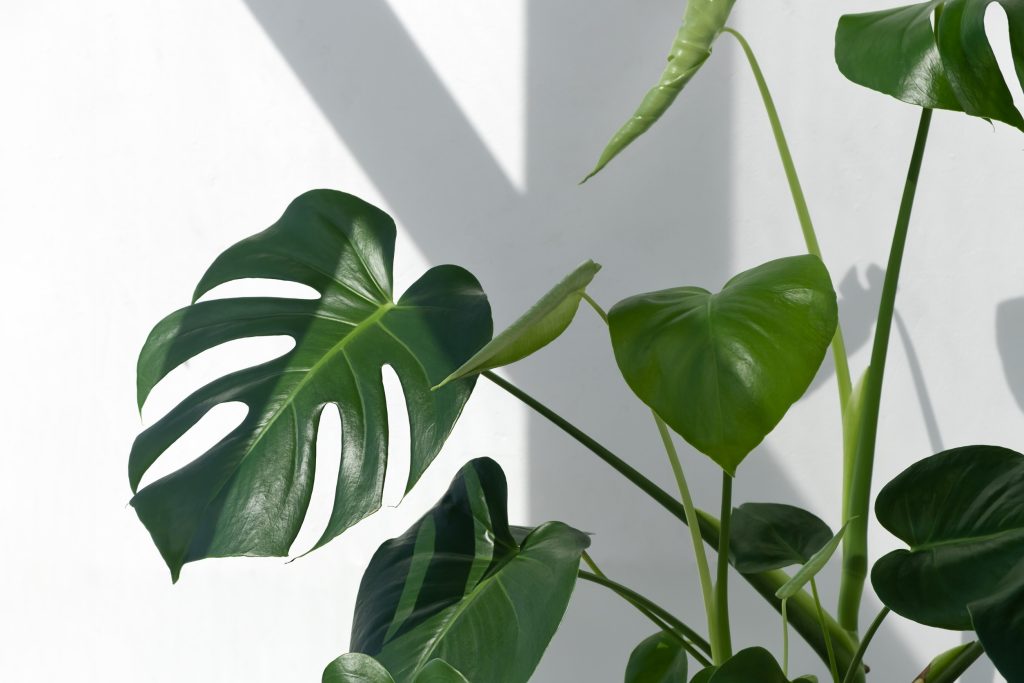The name “Monstera” is said to come from the Latin word for “monstrous” or “abnormal”, referring to the plant’s large leaves. Monsteras are well known for the perforations that adorn their heart shaped leaves- these splits are called fenestration. There is a bit of speculation behind the purpose of these perforations, but the most popular theory is that fenestrations allow water from tropical rain storms to drain onto the forest floor and prevent possible damage to their leaves. Native to the tropical rainforests of Central America, there are around 50 species of Monstera. When raised as an indoor plant, Monstera have a moderate growth rate, gaining between one to two feet per year. They are climbers, and need a lot of space; Monsteras tend to spread out horizontally and get leggy. Unfortunately, Monsteras are toxic to humans and pets.
Monsteras thrive in bright, indirect sunlight.
Water with filtered or rain water when soil is 50%-75% dry.
While monsters don’t mind lower humidity environments, they will thrive in humidity between 50%-80% with temperatures that range from 65-75 degrees Fahrenheit
Monsteras can be propagated from stem cutting. Simply snip a healthy steam/leaf with a node and place in water.
Fenestrated leaves require energy to split. The more light your plant receives, the more it will split.
